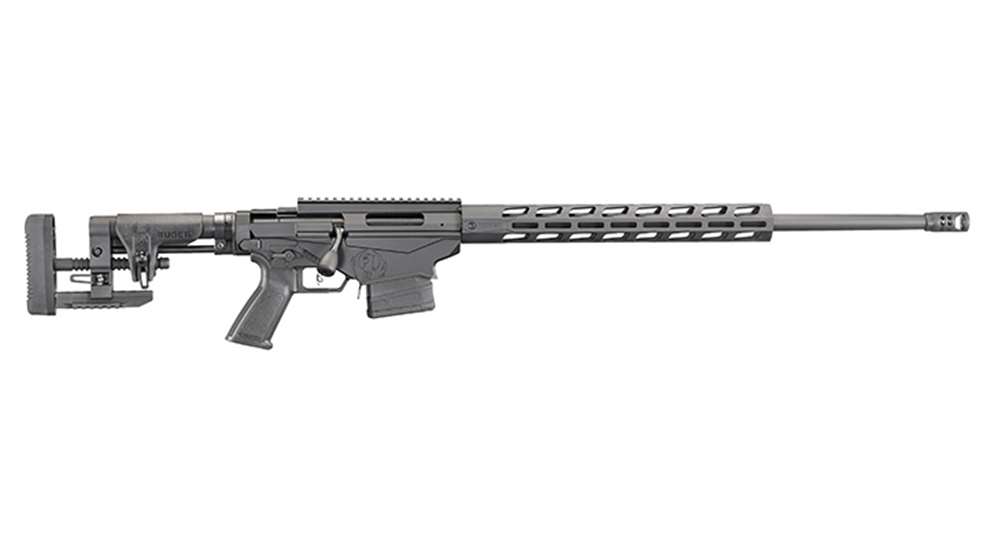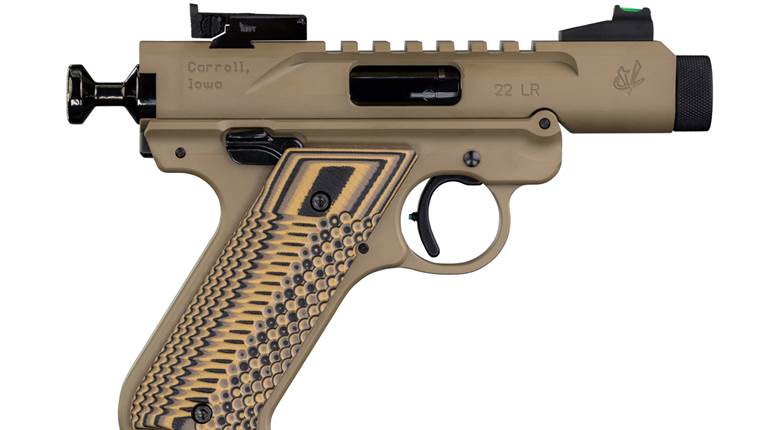
The Ruger Precision Rifle was introduced in a first-generation version in 2015 chambered in .243 Win., 6.5 Creedmoor and .308 Win. The next year Gen 2 arrived, which expanded the cartridge inventory to include 6 mm Creedmoor. Today you can also choose .300 PRC, .300 Win. Mag. and .338 Lapua Mag.
It would be easy to cite the diversity as the reason it was the most popular bolt-action rifle in sales on Gunbroker.com during 2019, except it has occupied that top slot for the past five years—literally since the famed manufacturer first offered it to enthusiasts. The real secret appears to be in the gu's features, with a generous helping of Ruger’s reputation for building quality at a reasonable price.
Eight versions are available in the regular lineup, with another seven manufactured as distributor exclusives. The latter group includes some great-looking camo color patterns, dark earth, U.S. flag motif and racy-looking red. The former group comes in your choice of, well, black.
Regardless of tone, all are built on a frame that lives up to the precision name. It begins with an in-line recoil path tailored to manage recoil directly from the rear of the receiver to the buttstock. The approach negates accuracy-robbing potential sometimes found i traditional bedding systems.
The stock, Ruger MSR, is adjustable for length of pull and cheek weld. There are QD attachment points and the bottom of the buttstock has a Picatinny rail. It hinges open and enthusiasts who prefer a different AR-style version can slip theirs on, thanks to the buffer-tube-style anchoring system.
The aluminum free-float handguard features M-LOK slots on four sides. The safety is ambidextrous and the gun comes with a 20 or 30 MOA Picatinny rail, depending on chambering, secured by No. 8-40 screws for increased long-range capabilities.
Ruger Precision Rifle bolt-action receivers and their accompanying one-piece, three-lug bolt are precision machined from 4140 chrome-moly steel. The bolt handle is oversized to speed manipulation.
The barrels, which vary in length from 20 to 26 inches—depending on caliber—are all cold-hammer forged from chrome-moly steel and have 5R rifling set at minimum tolerances. They end with the company’s Precision Rifle Hybrid Muzzle. When you add the Ruger Markman trigger, user adjustable from 2 1/4 to 5 pounds, with all the other touches, it’s obvious why the Ruger Precision Rifle has come out on top five years straight.
MSRPs run from $1,599 to $2,099, depending on configuration. For more details, take a look at American Rifleman’s video review in January 2019.
Related Reading
Customizing the Ruger Precision Rifle
NRA Gun of the Week: Ruger Precision Rifle in .338 Lapua Magnum
Tested: Ruger's Precision Rimfire Rifle



































